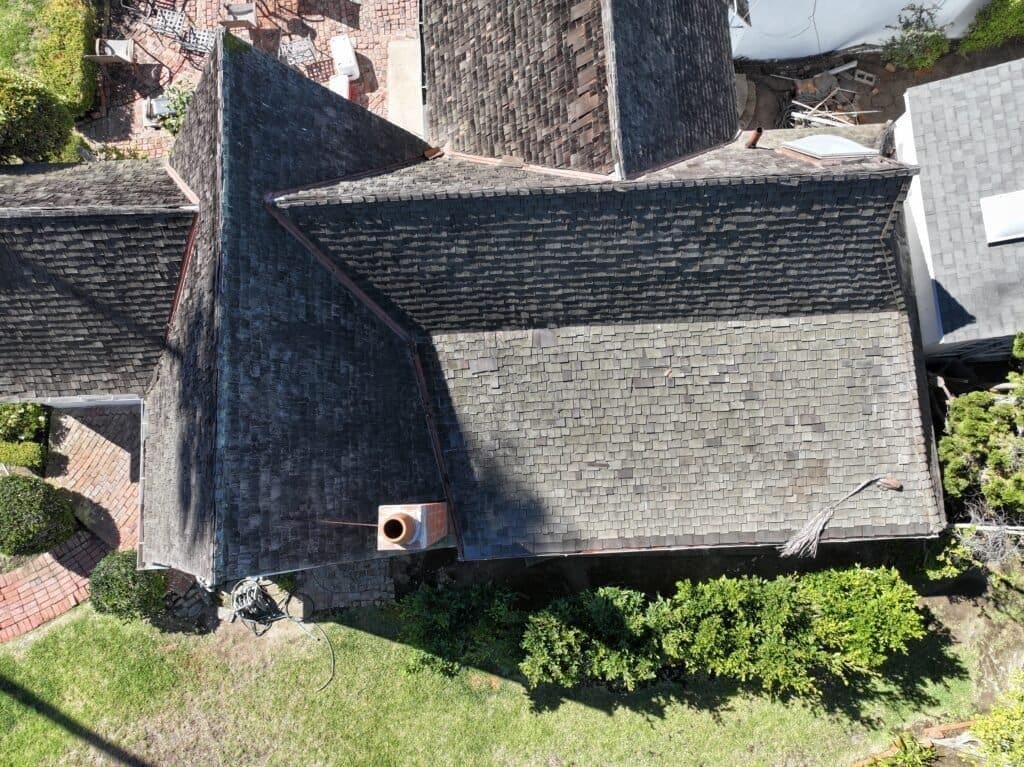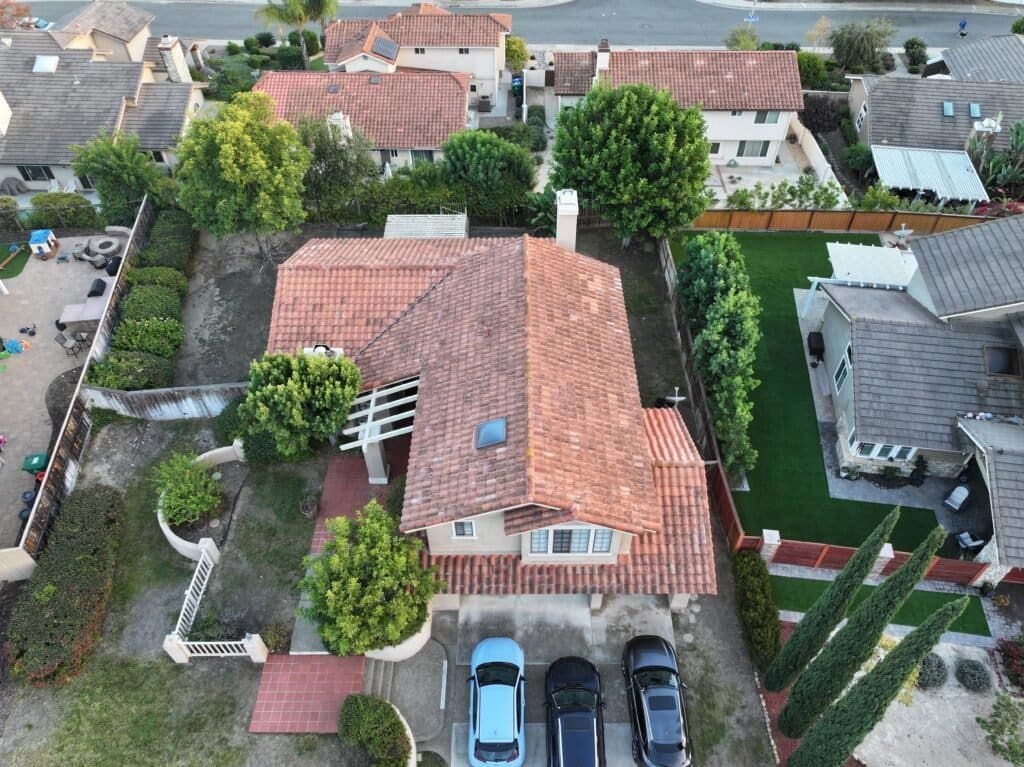
The frequency of roof replacement can vary widely depending on several factors, including the type of roofing material, climate, maintenance, and the quality of installation.
These guidelines are for the Southwestern United States. For tile roofs, the building codes require the felt underlayment to be the water-proofer instead of the tile.
Here are some general guidelines for common roofing materials:
Asphalt Shingles
Typically last about 15-30 years.
Wood Shingles/Shakes
Generally last around 20-40 years with proper maintenance.
Metal
Can last 30-60 years, depending on the type of metal used.
Concrete Tile
Concrete Tile in the ’70’s
In the 70’s tile was allowed to be installed over skip sheathing. The roof slope had to be over 4:12 and the overlap (head lap) of the tile had to be a minimum of 4″. Underlayment was not required. Tile installed over solid sheathing only required a head lap of 2.5″.
There was a lot of confusion with this requirement at the time. Since the framers were the ones installing the skip sheathing, a lot of it was installed so that the tile would only have 2.5″ of head lap instead of the required 4″. Many of these homes can be found in Encinitas. They are a constant source of leaks since the water can get under the tiles very easily. One year, someone started pressure washing one of these. The story goes, he was about a third of the way through when the homeowner came running outside with his arms waving. Long story short, everything inside the house was destroyed, including the doors and windows.
There are still a lot of these homes around because in order to replace the roof on them, the tile needs to be taken off of the roof (preferably thrown away), the surface sheathed, felted, and new tile installed. The extra cost of sheathing prevents many from reroofing. They prefer to deal with sporadic leaks as the years go by.
Concrete Tile in the ’80’s
The codes changed in the early 80’s, requiring solid sheathing.
In 1986 the codes changed regarding the tile’s overlap, 3″ is now required for a roof replacement, reroof, or new construction.
Concrete Tile in the ’90’s
In the early 1990’s more of the roofing codes changed again. In 1991, soft aluminum secondary flashings were now required. Before this, mortar could be used to fill the void around pipe penetrations.
Eave enclosures (birdstop) is now required. This helps keep live embers (during wildfires) from traveling up under the roof tiles. It was not required before.
Weather block is also required at hips and ridges. Prior to this you could just paint the hip and ridge boards.
1 pc. Clay Tile
2 pc. Clay
Slate
Can last 75-100 years or even longer with proper care.
Signs that a roof may need to be replaced include missing shingles, extensive damage, leaks, and age. Regular inspections and maintenance can help prolong the lifespan of a roof. It’s advisable to consult a professional roofing contractor for an assessment if you suspect your roof may need replacement.
Richardson Roofing is a licensed and fully insured roofing contractor in San Diego, and has been giving free estimates all over San Diego County since we were first licensed in 1991.
Get Your Free Roof Estimate in San Diego today!
Contact us for a no-obligation free roof estimate in San Diego. We’ll inspect your roof for free, explain your options, and provide a clear, written proposal.
Call Richardson Roofing at 858-284-9093, or fill out our convenient “Contact Us” form for a FREE Estimate. We look forward to hearing from you!


